I thought given the time of year it may be interesting to see who may have been on the Island and how they may have spent Christmas, or the previous mid winter celebrations over the years.
During the Neolithic Age which began around 6,000 years ago our ancestors held feasts to celebrate the shortest day of the year, the Winter Solstice on what is now the 21st December. The Island was still part of the Rame Peninsular back then but it is unlikely there was anyone actually on what would become the Island at the time. The population of Great Britain was only 250,000 and although there is evidence of Neolithic activity along the River Plym and near Liskeard there is no direct evidence of man in the area around the Sound. However if Neolithc man did happen to be here his Solstice celebration would have been one of feasting on Pork or Beef, fermented milk and cheese and more importantly beer (from barley) and mead made from fermented honey.
Once the Island was cut off from permanently from the Rame Peninsular around 3,000 years ago it is unlikely to have been inhabited just being a small rocky outcrop in the middle of the Sound that was inaccessible during bad weather. The Solstice remained the main celebration until the Romans arrived in AD43 who celebrated Saturnalia, a 5 Day feast come Orgy starting on 17th December. Here there was no rank, slaves were served by their masters, gifts were given and gambling was allowed. The first recorded Christmas was celebrated AD336 in Rome and then spread throughout the Christian World. The 25th December was chosen because it was the Winter Solstice in the then used Roman Calendar and because the Pope thought that as the shortest day it was when Christ would have been born. Practically it meant it didn’t interfere in the early days with those still celebrating the Pagan festivals of the Solstice or Saturnalia and preventing any discord amongst the population. For the same reason the Christian Christmas retained many of the aspects of the Solstice Feast and the Romans Saturnalia.
The first building we are aware of on the Island is St Michael’s Chapel mentioned in 1135 but almost certainly built earlier. The Island since just after the Norman Conquest had been in the hands of the Valletort family who held the Barony of Trematon. The Chapel was most likely built to fulfil a vow in thanks for victory over the Saxons and there is no evidence that it was anything other than a private votive chapel. The Valletorts would have been highly unlikely to have spent any part of Christmas there and would have celebrated at Trematon. At the time people would have fasted for a period up to the 24th December then partied hard for the next 12 days finishing on 6th January. Decorations would have been evergreens like Holly and Ivy, a yule log which originated with Viking and Saxon celebrations would have been burning, the rich served the poor, gifts were exchanged, better than usual food would have been bought and alcohol drunk. Although Church Services were held and Carols sung this religious devotion was far outdone by the The Lord of Misrule who would have overseen boisterous parties over the whole 12 days.
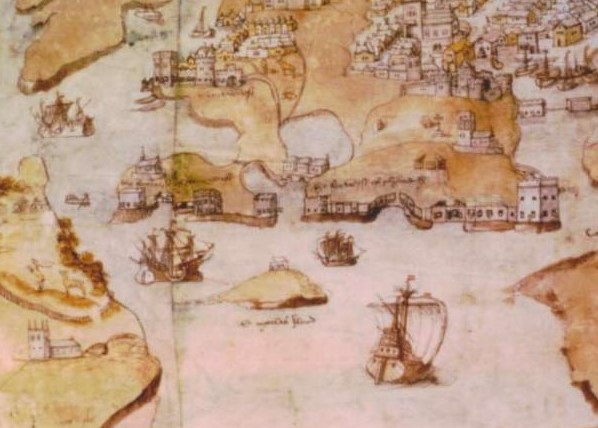
The first fortifications were built on the Island from 1549 in the reign of Edward VI. Tudor Christmases were still of the 12 day party hard variety as described earlier. Although we know the Island was used as a refuge in 1549 during the Western or Prayer Book rebellion this did not happen over the Christmas period. It is also unlikely that initially there was a permanent manned garrison on the Island. We had no standing Army and the Militia was called out if a threat appeared. The weather was a strong influence on when invasions were likely and the winter period wasn’t one of them. We do know Edward VI paid for 4 Gunners to man the Island for 2 years from 1550 but this is likely to have been part of the wider Plymouth Garrison. As it was traditionally a time off work it seems more than likely that the Gunners would have celebrated Christmas on the mainland perhaps in Plymouth although there were quarters for them on the Island. We were at war with Spain 1585 until 1604 but the main invasion threats were during the Summer so again it seems unlikely that the Island would have been Garrisoned over Christmas.
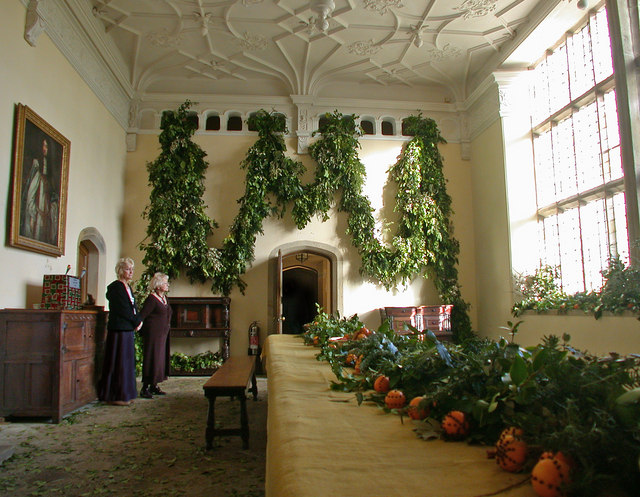
However this would certainly have changed with the English Civil War. Plymouth was besieged by the Royalists year round for 4 years. We know there was now a standing Army and there was a Garrison on the Island. For the Parliamentary Garrison there would have been no celebrations and not just because of the Royalist threat. Puritan Churchmen were a leading force in the Parliamentary movement and they did not approve of celebrations regarding it as a wasteful celebration that dishonoured God. For them Christmas was a time for praying and atoning for all your previous sins including those previous Christmases when you partied to excess. By 1644 Celebrations for both Christmas and Easter were banned. The Civil War ended in a Parliamentary victory in 1649 and it seems a reduced presence was maintained on the Island as part of the wider Plymouth Garrison. With the Parliamentarians in charge Christmas was still banned although I’m sure some of the Soldiers at least would have found a way of having a cheeky pint or three.
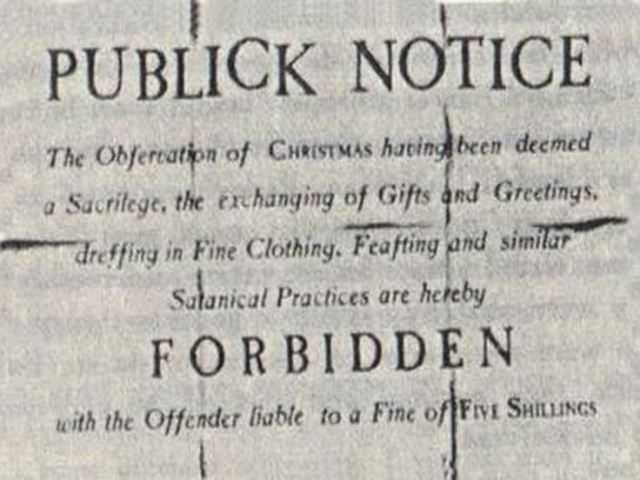
1660 saw the Restoration of the Monarchy with Charles II back on the throne as the Parliamentary Movement dissolved into factions after Oliver Cromwell’s death in 1658. Our Charlie was definitely a party animal and reinstated Christmas along with Easter. The Island was manned as it was used a State Prison from 1660 to 1685. There were only 12 prisoners at most and only 4 spent more than a year on the Island. The only prisoner who was not a Puritan was James Harrington, a Republican author. Both Military Prisoners, Colonel Robert Lilburne and Major-General John Lambert were Puritans and the remainder were Puritan ministers none of whom would have celebrated Christmas. However the Garrison would have enjoyed a celebration. It was back to the party hard type of Christmas for the full 12 days beginning on 24th December and Charlie took it to excessive lengths with his celebrations which started on 1st November and didn’t finish until 2nd February. Decorations would have been similar to medieval and Tudor times with whatever greenery could be found, traditionally Holly, Ivy and Fir. For the Garrison this would have been bought over from the mainland, at the time there was very little in the way of trees or vegetation on the Island. A burning Yule Log would still have been the centrepiece. Fir or Christmas trees were part of the celebration but were a central community point on the outside rather than inside. The main food at the feast would have been Beef or Rabbit and possibly Goose, Turkey and Chicken although available was far too expensive except for the very rich. Often the Officer Commanding the Company would pay for the Christmas meal, including barrels of beer and possibly have given them a small gift – it would normally have been money in a small clay pot known as a piggy hence piggy bank. Carols which had been sung since the 10th Century would have been sung, Carol literally means to sing in a circle and was banned by the Catholic Church in medieval times so the singers went door to door. The Lord of Misrule still presided over the celebrations and I’m sure the soldiers of the Garrison would have taken full part in the numerous shenanigans that would have occurred. Exactly how large the Garrison would have been over Christmas is difficult to tell as some would have been on leave in peacetime it is likely to be minimal, at a guess it would be no more than 100 which was roughly the size of an Infantry or Company of the time less those on leave and those that had deserted.
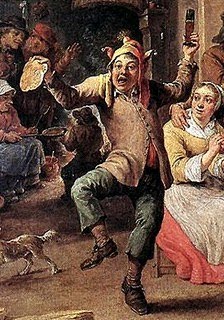
This type of Christmas, celebrated over 12 days, carried on throughout the Georgian Period although Church Services seem to have taken a more central role over the years and the parties, especially for the rich became more lavish as the country as a whole but especially the Rich became richer. On the Island there was most likely at least a small garrison and drawn from the wider Plymouth Garrison. However the weather still dictated troop movements and the fighting seasons. Traditionally soldiers took leave over the winter months until around March so it was likely to have been minimum manning on the Island. However by the early 1800’s the manning of the Garrison was around 60 Gunners and between 20 and 100 infanteers depending on which Regiment was providing the detachment so at Christmas it is likely to have been less with some soldiers taking leave. Nonetheless the Officer Commanding would still provide the meal and the other Officers would have served their men, there would have been decorations, the giving of gifts, a Church service and the singing of carols. Decorations were still evergreens although kissing boughs made from Mistletoe though whether any appeared on the Island I couldn’t say. Porter Beer, Punch and Mulled Wine had also started appearing on the alcoholic menu and Plum, later Christmas Puddings on the food menu. Duties would have been done by the most junior soldiers and there were often amateur plays put on by some of the soldiers and possibly some organised games for those not on duty or they would have spent their free time playing cards which was always popular.
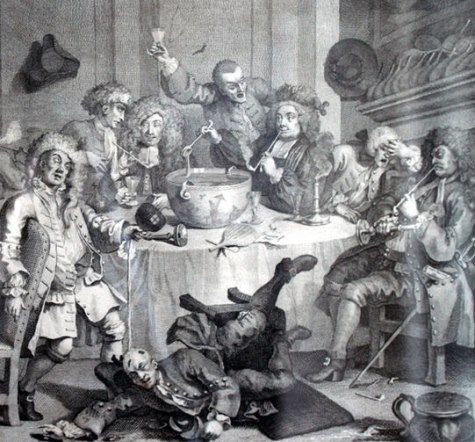
During Victorian times parts of Christmas did change with the great technological advances in transport and the Industrial Revolution. For the Soldiers as with the rest of the population the Holiday period was just two days, Christmas Day and Boxing Day. Boxing Day now being the day when the rich gave the poor or their servants and workforce their gifts which was still money in boxes. The Island was permanently manned although the soldiers would only have two days holiday they would have also taken their leave over the winter months leaving a minimal manning on the Island. Census records from 1861 and later show that there were families on the Island, 13 of them by 1873 with a total of just over 70 people on the Island. If the families remained on the Island the soldiers would have made hand carved toys for the children as gifts and one would have dressed up as Father Christmas. There was a postal service and the sending of cards was affordable for all by 1870. Father Christmas or Santa was a feature by 1870 also drawing on the green clad giver of presents from the old Solstice celebrations and the Dutch tradition of Sinter Klaas. Turkey and Chicken became cheaper and gradually replaced Beef and Goose as the main food and Christmas trees were regualrly appearing indoors. Decorations started to change with the Christmas Tree replacing the Yule Log, Coloured Paper Chains, Christmas Baubles, Nativity Scenes, Pine Cones, Christmas Stockings for children all becoming popular. Whilst some soldiers would have been on leave those on the Island would have their meal still provided by the Officer Commanding up until around 1900 or they would have forfeit some of their pay towards the cost. After around 1900 the meal started to be provided by the newly formed military logistics chain rather than by the Officers or men. The men would have been served by their Officers as before with Church services, amateur dramatics or music hall skits by some of the Garrison and possibly some organised games.
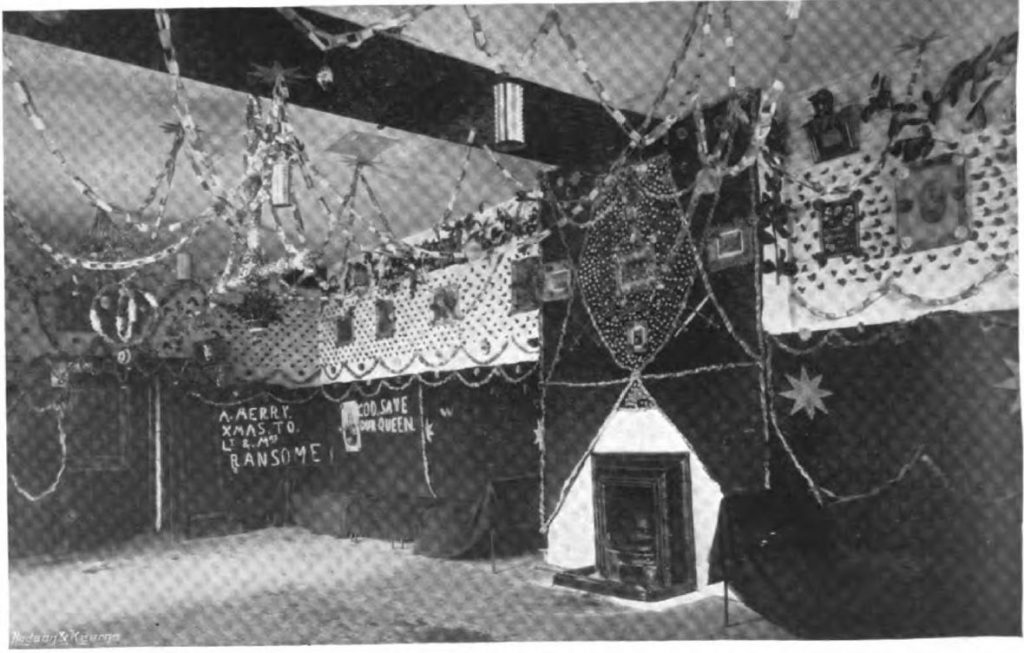
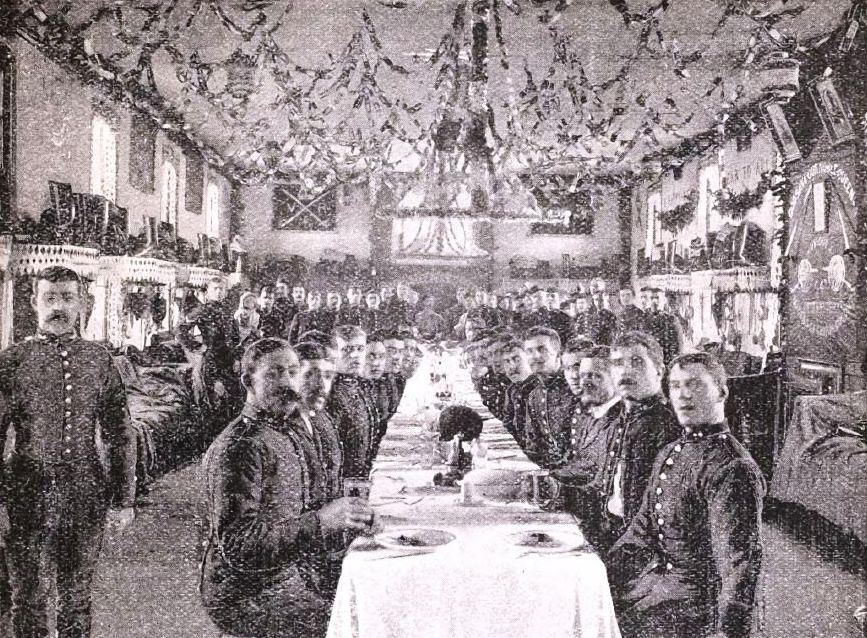

Things wouldn’t have changed that much up to the Military leaving the Island if there was a Garrison on the Island. We do know between World War I and World War II there was for a period just a civilian caretaker on the Island and the same happened as the military were decommissioning the Island in the late 1950’s. However in World War I this was up to just over 200 and in World War II there were up to 490 on the Island. The Garrison would have been woken by the Officers and SNCO’s on Christmas morning with a cup of Gunfire a mix of tea with a shot of Rum which probably originated around the turn of the Century. There would have been a Church Parade although depending on who the Commanding Officer was it could be optional possibly. Activities such as amateur dramatics (the Island had its own Concert Party during World War I), sports and concerts were still part of the day especially when the Island was fully manned during the Wars as much to stop the men getting drunk as anything else. The meal would be provided through the military logistics chain as opposed to the Officer Commanding paying for the meal but Officers and SNCO’s would have served the JNCO’s and private soldiers their Christmas meal. Those on duty would be the most junior of the ranks that were needed. Sometimes an evening meal would be arranged after any organised activities or the men would have retired to the various messes to continue the celebrations. Even during the Wars an extra effort would have been made for Christmas as a boost to morale as much as anything else. The logistics or supply chain would have a traditional Christmas meal for the soldiers normally with a few cans of beer and cigarettes. In 1915 there was a Royal initiative to provide every soldier with a metal cigarette case. The YMCA in both Wars would also have been involved in making the Soldiers life more comfortable. Although the majority of care packages were for the soldiers at the front local initiatives were not uncommon and there was at least one appeal for items for the YMCA on the Island in December of 1915. There was also a Christmas Day Concert on the Island in 1915 given by Miss Richards Carollers and the Island concert party would most likely have played its part over the Christmas period both on the Island and around the wider Plymouth area.
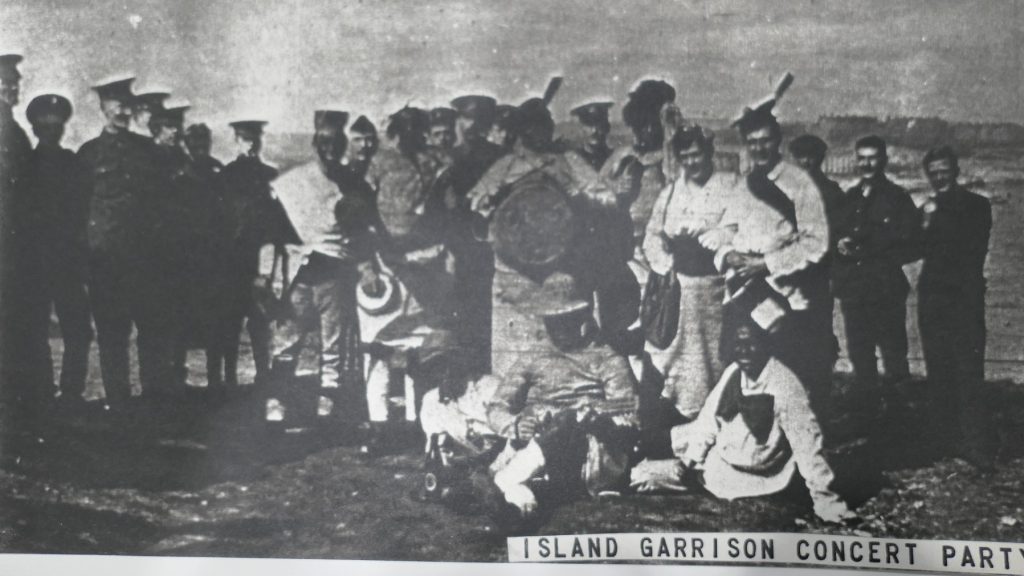
During the Adventure Training Years there was only a small permanent staff and if anyone was on the Island it would only have been the Island Warden and his family. The Centre only opened over late spring to early autumn with the rest of the year being maintenance and preparation for the coming season. At most it would have been a small family Christmas on the Island at that time. For the future when the Island is developed it is possible we could have celebrations over the Christmas period on the Island perhaps with a theme from one of the Christmases past, anyone volunteering to be the Lord of Misrule?
